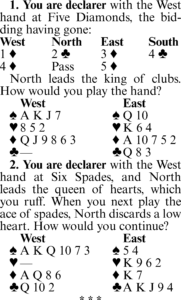Your mailbox might be a target
One of the biggest success stories of our federal government is maintaining the organization to process, sort and deliver millions of pieces of mail every day. Using the U.S. Postal Service system is generally safe and sound, but be aware of a few current mail-related scams targeting older adults.
Thieves targeting your mailbox
Avoid leaving your mail in your street-side box with the flag up for your carrier. Right in our own Valley, scammers cruise around at night to steal mail from boxes with the flag left up. The crooks get to work opening the envelopes, extracting checks, and altering markings to pass them for cash — in your name.
That’s a nasty surprise you don’t need. Side-step these mailbox thieves by depositing your mail right at your closest post office. And if you’ve never been told, it’s a bad idea to send cash through the mail.
“Delivery Notification Failure” messages
If you receive an email or text claiming to be from the Postal Service, disregard it. And if the message contains a link about an attempted or intercepted package delivery, do not click on it.
That click will embed a virus or malware designed to steal your user names, passwords and financial account information. Disregard these kinds of messages. If you believe that something is truly amiss with your mail service, double check at your post office.
If you want to help fight the scammers behind these schemes, forward the message to spam@usps.gov.
In any case, the Postal Service says they DO NOT notify customers of package delivery attempts by text or email.
Messages from the “Postmaster General”
Another popular scam targeting seniors is fake messages sent in the name the Postmaster General.
These messages state a parcel is waiting for you with a cashier’s check for $2 million.
It asks for your cooperation to promptly send $50,000 worth of $1,000 money orders by mail, along with your name, address and phone number. Say what?! This scam is a blend of a few things — preying on your trust in government officials, and your belief that a miracle has happened to you.
Sad to say, but these kinds of miracles are never true. The Postmaster General is a pretty busy person, and the last person sending goofy messages like this to anyone.
Fake “QR” codes sent in the name of the Postal Service
QR (Quick Response) codes are designed to quickly whisk you around the internet, to speed a purchase or pass along information. Disregard any QR code sent in the name of from the Postal Service or any government agency.
If you trigger a code placed by a scammer, your phone or computer will drop you into a website designed to look official but phony in every way, making it easy for your personal information to be stolen.
Old-fashioned scams delivered by letter
The U.S. Postal Inspection Service advises seniors in particular, to be vigilant when responding to letters with employment offers, investment opportunities, charities, veterans’ issues or compensation and news of sweepstakes wins.
If you respond to such letters, you are headed down a slippery slope. Do not send money to any person or organization based on a letter.
If it seems too good to be true, pause and run it by a friend. For years, a fraud ring in Africa has been sending out letters with the good news you’re going to get millions of dollars for essentially nothing.
They are still sending out these creative letters, usually with grammar and spelling errors — if you get one, toss it in the trash.
Hug your mail carrier
Our mail system is a wonder of technology and a lot of hard work. As we all sleep, thousands of people are working in postal processing centers, shuttling mail all over the country.
The face at the end of this huge process is your mail carrier. If you haven’t done so, take a minute and thank them for their service.
Regardless of rain, sleet, snow and the occasional dog bite, they always come through for us.

